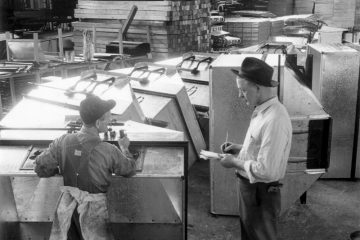Written by Gabrielle Bates
Edited by Sereen Suleiman and Lauren Kime
Are you a foodie? Or maybe you picked up a new hobby over the last couple of years? For a moment, sourdough starters were all the rage. Yet what made sourdough starters so popular? To understand this, we must go back in time, when Karl De Smedt constructed a library.
It all started in 1989, when De Smedt obtained a starter sample from San Francisco and experimented with it at the Puratos Sourdough Library in Belgium. The library was officially established in 2013, and it currently houses over 100 sourdough starters. Its mission is to research and preserve some of the world’s oldest strains of sourdough. Over the years, they have collected more than 700 strains of wild yeast and 1,500 lactic bacteria.
Karl De Smedt, the only sourdough librarian, traveled the world collecting sourdough starters. He believed each sample tells a story and holds history. Most of the collection was sourced from Europe, but there are starters from Japan and Brazil as well.
De Smedt playing with bacteria cultures.
First, scientists analyze every specimen to record its unique features. Microorganism samples are then created from those starters and stored in a freezer, whereas the starter samples are stored in glass jars at 39 degrees Fahrenheit. The microorganism samples help the scientist discover what ingredients comprise each sample. The starters are fed bi-monthly with flour provided by the original owners.
To have the luxury of joining this database, the starter must be unique, contain an interesting mix of microbes, maintain a level of fame, and be well-aged. You can savor the online database from the comfort of your home or enjoy this short clip with Karl.
While the library is not officially open to the public, you might be lucky and score an invite by befriending and chatting with Karl. You can enjoy Karl’s adventures on Instagram @ sourdough_librarian.


